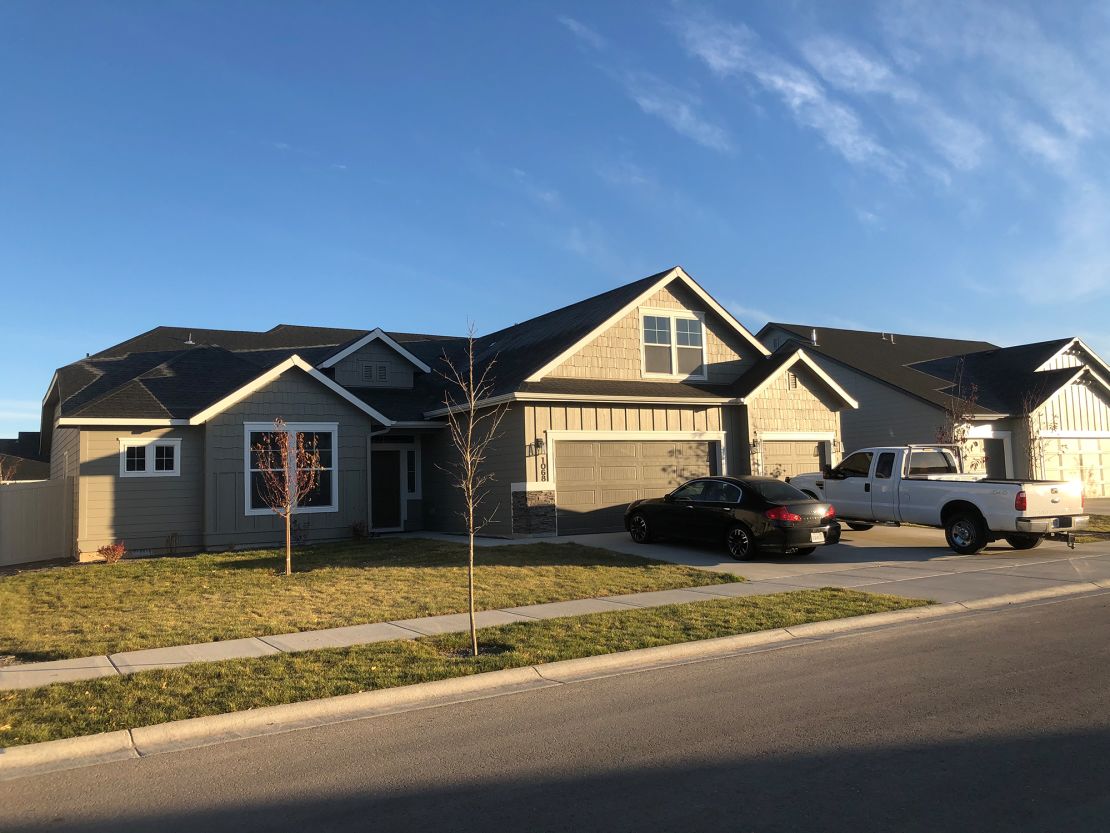When Mark Jenkins and Lori Crowell rang in 2020, they had no idea they’d be moving to another state before the end of the year. But then the pandemic hit and so much changed.
“We thought about leaving Seattle the past couple years, but we weren’t ready,” said Jenkins. But when the pandemic made remote work more of a reality for him and they realized they could live anywhere, they packed up and moved to Idaho. “The weather is a big improvement. The traffic is better. It is very welcoming. People are strangely friendly.”
Millions of Americans ended 2020 living at a different address than where they started the year.
By October, 8.93 million people had moved since the pandemic began in March, according to an analysis of United States Postal Service change of address requests by the National Association of Realtors. That’s an increase of nearly 94,000 from the same period the year before.
More from Success
Where were all these people moving to – and from?
Contracts from moving van companies Atlas Van Lines and U-Haul show that people who chose to move to a new state headed away from the population centers on the coasts, with New York and California losing the most residents in 2020. And NAR’s report found newly untethered remote workers left big cities for the suburbs.
“New York and California had much higher outbound activity,” said Barry Schellenberg, Atlas Van Lines president. “It could be the cost of living, tax rates or the political climate, perhaps.”
This pattern is expected to continue into 2021, according to NAR. With more people deciding where they live based on their own personal needs instead of their commuting time to work, it could mean long-term growth for suburbs and smaller cities.
“People want to migrate where they want to go and a lot more companies are allowing employees to work remotely,” said Schellenberg. “Very large organizations have broadcast to their employees: You don’t need to be close to the office anymore.”
A ‘land rush’ in Idaho
Idaho topped Atlas’ list for states with the most inbound moves, meaning more moving trucks were arriving in the state than leaving it. Also in the top 10 were North Carolina, Maine, Alabama and New Mexico.
“The Boise land rush, I call it,” said Jenkins, a consultant aerospace engineer who relocated to Idaho In November. “I’ve never seen so much construction. Not just houses. Schools. Roads. Hospitals. Churches. It is exciting.”
The pandemic had accelerated Jenkins’ shift to remote work, allowing for a quality of life move that they had been considering. The Seattle protests last summer against police brutality and systemic racism, which turned into violent clashes with the police, pushed them further.
“It was a tipping point,” he said. They inked a deal on a new construction home in June and moved into a rental in Idaho in November. They expect to move into their new home this April.
Barbara Dopp, an agent with Keller Williams Realty Boise, said that her team had their best year ever in 2020 and half their sales were to buyers coming from out of state.
“I had people calling me, primarily from California and Washington, and they would say, ‘I just have to get out,’” Dopp said. “We are a conservative state and people are attracted to that.”

She said buyers coming to Idaho were looking to get away from changes in taxes, local ordinances or the curriculum taught in schools – and they were seeking more safety, she said.
“Their perception was that it wasn’t safe to walk their streets, that things had changed and they weren’t going back,” she said.
Rick Halstead, who also works in the aviation industry in Seattle, and his wife Julie also left Seattle for Idaho as a result of the pandemic, protests and what he described as a steady decline in their quality of life.
“The pendulum of the political environment really swung in the past 10 years,” Halstead said. “There were more and more protests, which would snarl traffic. Opioid problems. Homelessness. Crime. It was encroaching where we lived.”

Over a couple weeks in June, a curfew was placed on their neighborhood for safety reasons, police helicopters circled overhead and then, Halstead said, there was a shooting.
“It didn’t feel like home anymore,” he said. “Arriving in Idaho has felt like going back 15 years. You get the sense in our neighborhood you’d be okay leaving the doors unlocked. We’ve met more neighbors in three months than we met in our old neighborhood in seven years.”
The couple now work remotely permanently and sold their 20-year-old home in Lynnwood, a Seattle suburb, for $630,000. They bought a new construction home that is 600 square feet bigger for $429,000 in Meridian, Idaho.
“It’s bigger, brand new and the house payment is $1,000 less [a month],” said Halstead.
Most surprising, he said, his health is improving.
“I just had a physical and my blood pressure was a lot lower,” he said. “I haven’t done anything different but move here and it went down by 20 points. I feel a lot less anxious. I kind of felt like I was always looking over my shoulder.”
The Southeast is another draw
Tennessee was another top destination among people looking to relocate last year, according to a report from U-Haul, which tracks the net gain of one-way U-Haul trucks entering a state versus leaving over the course of a year. Texas and Florida, which had a lock on the top two spots since 2015, came in second and third, respectively, last year.
“I’m seeing a lot of people from California move to Tennessee because they’re attracted to our lifestyle,” said Jeff Porter, U-Haul Company of Nashville president. “Tennessee has no income tax and is very business friendly. There are plenty of jobs. People and companies are taking note.”

Edward Hill and his wife, Margaret, moved out of their one-and-a-half-bedroom apartment in Brooklyn’s Crown Heights neighborhood and bought a home in Nashville in May. The couple had become concerned about the impact of the pandemic on their health and mobility in the city at the beginning of March. With both of them shifting to remote work full-time, they left on March 11 and initially went to his family’s home outside of Charlottesville, Virginia.
They had considered a move to either Virginia or Tennessee to be near family. By May, they had decided to make a permanent move to Nashville to be closer to Margaret’s family and to support her work in the music industry.
“Normally we wouldn’t have moved last year,” Hill said. “We would have renewed our lease, but the pandemic just gave us the boost to get out of there.”

Because of the pandemic they haven’t gone out much since buying their new home. But they have a lot more room to live, a yard for their dog and there is good fishing – Hill’s passion – nearby. Plus, it’s a lot cheaper than Brooklyn.
“The mortgage is half of what rent was in Brooklyn,” Hill said. “Definitely a lower cost of living here.”
Leaving big cities for the suburbs
While large cities lost the most people during the first seven months of the pandemic, many residents that left didn’t go far, according to NAR’s analysis.
Between March and October of 2020, most Manhattanites moved to Brooklyn (33%), the Hamptons (29%) and Jersey City (8%), according to NAR. Similarly, most San Franciscans moved to a county within 60 miles of their previous home.
Suburban counties topped the list of places gaining the most people, while cities saw the biggest losses.
Williamson County in Texas, a suburban area outside of Austin, saw the biggest migration gains in the country during the first seven months of the pandemic, according to NAR. Another county with a large influx was Suffolk County, New York, home to the tony Hamptons.
In contrast, New York County (Manhattan) and Texas counties Travis, Harris and Dallas Counties (home to the cities of Austin, Houston and Dallas, respectively) lost the most people.
Atlas Van Lines, a large provider of corporate moves, saw a dramatic drop in companies relocating employees last year and a rise in the number of people doing it on their own.
The rise of remote work brought on by the pandemic is a major reason for the shift away from big urban centers, according to Schellenberg.
But despite the rollout of vaccines and optimism about a return to work, Schellenberg expects that shift to continue as many companies permanently adopt remote work.
“The pattern [in 2021] will be similar to what we saw in the past year,” Schellenberg said. “People will be moving away from coastal areas where there is a higher cost of living and going to places like Idaho, Arizona, Texas, Tennessee.”






















